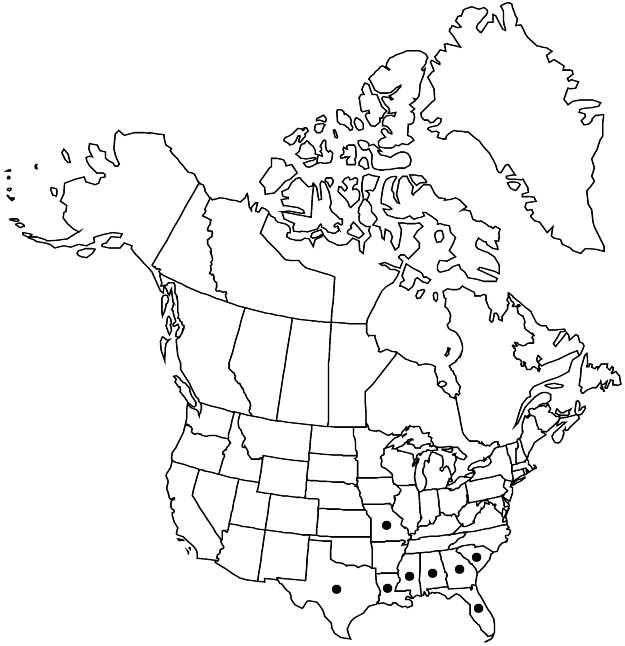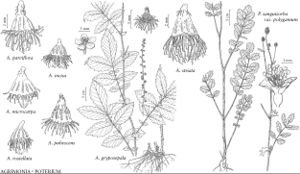Agrimonia incisa
Fl. N. Amer., 430. 1840.
Herbs, 3–11 dm. Roots: tubers fusiform, thickened. Stems with glistening sessile-glandular hairs and ± matted-pubescent to villous and hirsute (hairs scattered, erect, stiff, 2–3 mm). Leaves: mid cauline stipules ± falcate, margins dentate; major leaflets 3–15 (mid cauline 9), minor 1–3 pairs; major leaflet blades ± obovate, terminal largest, largest of these 2.3–4.1 × 1–1.7 cm, margins incised, apex obtuse to acute, abaxial surfaces glistening with sessile-glandular hairs and pubescent to villous and sparsely hirsute (hairs stiff, 2 mm). Inflorescences: axes often with glistening sessile-glandular hairs and pubescent to villous and hirsute (hairs stiff, erect, 2 mm). Flowers usually ± alternate. Fruiting hypanthia hemispheric to turbinate, 1.5–2.7 × 1.8–3.3 mm, obscurely sulcate, hooked bristles in 3–4 circumferential rows, proximal row spreading 45–90°, glistening with sessile-glandular hairs (often yellow).
Phenology: Flowering late Jul–Nov.
Habitat: Dry to moist, longleaf pine-oak woods, oak-hickory slopes, roadsides, sand or shell maritime thickets
Elevation: 0–200 m
Distribution

Ala., Fla., Ga., La., Miss., Mo., S.C., Tex.
Discussion
Populations of Agrimonia incisa are infrequent and usually widely scattered within the limited range (15–20 currently known). The plants are sometimes abundant where they occur.
Selected References
None.
Lower Taxa
"thin" is not a number.
